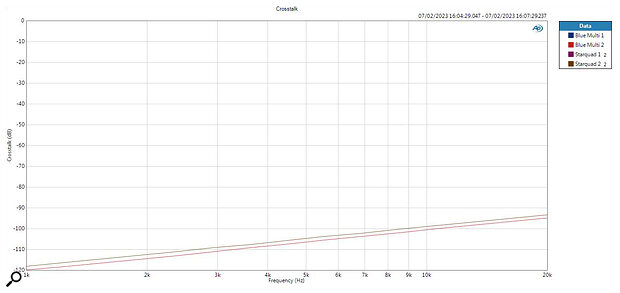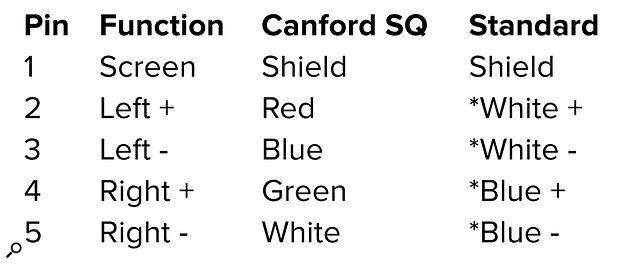 While there is a difference in crosstalk between star‑quad and regular mic cables, it’s a negligible one.
While there is a difference in crosstalk between star‑quad and regular mic cables, it’s a negligible one.
I want to run a stereo pair of mics down a single cable to minimise the visual clutter on a tall mic stand, and to speed up rigging/de‑rigging time. I usually make my own cables but, although I know I can use a two‑pair multicore cable, I’ve seen commercial versions using ‘star‑quad’ cable. A quick survey suggests star‑quad cable is roughly half the cost of two‑pair multicore, so is this a valid solution? And if so, how should I wire the star‑quad to the 5‑pin XLRs?
Rob McCarthy
SOS Technical Editor Hugh Robjohns replies: Yes, it is a valid solution, and I use star‑quad cables for carrying stereo signals from main mic arrays with no problems at all. The main concern most people have is that of crosstalk between channels, given that the core wires carrying the two channels are twisted around each other without individual screens. Have a look at the Audio Precision test measurements I’ve included here, which show the crosstalk between channels for two 25m cables: the lower trace is a Van Damme Blue Series two‑pair multicore, while the parallel upper trace is Canford Audio’s SQ star‑quad. As you can see, there’s barely 2dB difference between them: the crosstalk is around ‑100dB at 10kHz and close to ‑120dB at 1kHz in both cases. So, while star‑quad is marginally less good, it’s really not noticeable in practice. The cost savings are considerable, and it’s also a little quicker and easier to wire star‑quad into a 5‑pin XLR than the multi‑pair cable.
Star‑quad cables often have superior shielding to standard mic cables.
It’s also worth remembering that the inter‑channel level difference needed to move a sound fully across to one side of the stereo image is only 16dB, so crosstalk around ‑100dB really isn’t an issue at all! I haven’t had any problems with external interference either, partly because star‑quad cables often have superior shielding than standard mic cables.
As for wiring star‑quad for stereo, the science works best if you use opposite wires for each channel. Canford Audio’s star‑quad internal cores are coloured red, blue, green and white (a BBC standard). For a standard mono mic cable you’d wire opposite pairs together at each end, so red and blue carry the ‘hot’ signal on pin 2 and green and white the ‘cold’ on pin 3. It therefore follows that for stereo applications red and blue would carry the left stereo channel, and green and white the right (see table below).
Unfortunately, most other manufacturers’ star‑quad cables use two blue and two white cores. This colour scheme does make it very easy to wire up a standard mono mic cable (wire two whites together for the hot signal on pin 2, and two blues together for the cold on pin 3), but wiring for stereo is more challenging. The two whites should carry the left channel and the two blues the right channel — but as there’s no indication as to which wire in each colour pair is which, you’ll need a multi‑meter to test each core as you wire the XLR, to make sure you get them the right way around at both ends! That’s why I prefer Canford’s SQ: the four colours mean you can’t go wrong, making it quicker and easier to use.
Canford’s SQ6.5 cable has the same diameter and robustness as a standard mic cable, while Van Damme’s Blue Series two‑pair is a little thicker but remains wonderfully flexible. The latter also has a notable advantage when making the 5‑pin to dual 3‑pin XLR splitter cables needed to connect mics or a mixer/interface, since the individually jacketed pairs can be wired straight into the XLRs (making splitter tails from star‑quad takes a lot more work). For that reason, my own implementation uses Blue cable for all the splitter tails, and a mixture of Blue multi‑pair and star‑quad terminated in 5‑pin XLRs for the long runs.
The standard 5‑pin XLR wiring is as shown in the table below:
 *The same colour wires are rarely marked so need to be tested and identified individually during construction.
*The same colour wires are rarely marked so need to be tested and identified individually during construction.
